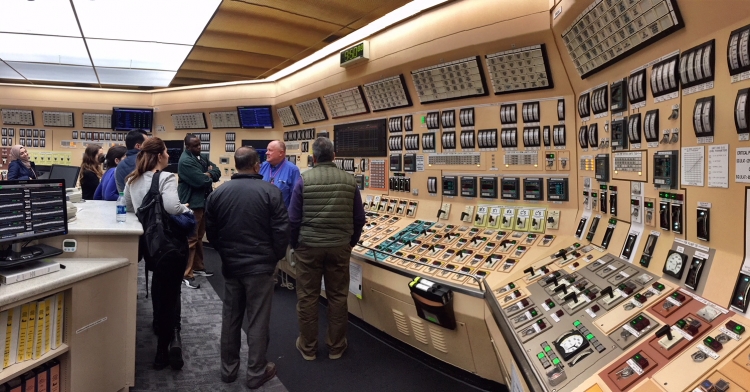Developing and maintaining a safe and sustainable nuclear power programme requires a wide range of national competencies that countries embarking on a new nuclear power programme need to acquire. To support these so-called ‘newcomers’, the IAEA organized a three-week course to ‘train the trainers’ from Member States and provide them with tools to develop national training programmes on building the necessary skills and capabilities for nuclear infrastructure development.
Coming from Bangladesh, Egypt, Jordan, Kenya, Nigeria, Poland and Turkey, 17 participants attended this IAEA training course which was hosted by the Argonne National Laboratory (ANL), Illinois, USA, from 5 to 23 March 2018.
These countries are all in Phases 2 or 3 of the IAEA Milestones approach, a holistic, phased approach to develop and implement a nuclear power programme. Their Governments have committed to including nuclear power in their energy mix and are now preparing for contracting and construction, or have started construction, of their first nuclear power plant. The participants came from the three key organizations identified in the Milestones approach, i.e. governments/national nuclear energy programme implementing organizations (NEPIO), regulatory bodies and future owner/operators.
Train the trainers
IAEA and international experts, as well as management and technical specialists of ANL and the US nuclear community delivered the lectures, coordinated exercises and group activities and shared their teaching materials with the participants.
“The objective of this training course was to develop dedicated teams of instructors in Member States and help them plan tailor-made training programmes in their respective countries,” said Sean Dunlop from the IAEA Nuclear Infrastructure Development Section, one of the lecturers at the course. “They are also expected to implement at least one training activity in their home countries within six months after completion of the course.”
Course Programme
The overall focus of the course was on what makes a nuclear power project unique among other major projects and the characteristics of nuclear power that need special attention. These include nuclear safety, security and safeguards; implementing international legal instruments; enacting a comprehensive nuclear law and establishing a regulatory framework; financing and government involvement; and the need to accumulate funds for decommissioning and radioactive waste management.
The first part of the course introduced the IAEA’s Milestones approach, the evolving competencies required in each organization during each phase of nuclear power programme development and the importance of encouraging staff to think critically and holistically.
“This systematic approach was most useful,” said Ms Esra Songur from Akkuyu Nuclear JSC, the owner/operator of Turkey’s first nuclear power plant planned to be constructed at the Akkuyu site. “I was also able to gain a better understanding of the 19 infrastructure issues and will definitely use the output of this programme to improve my and my organization’s performance.”
This training course helped me to take a comprehensive look at the roles of the NEPIO, the regulatory body and the owner/operator throughout the nuclear power programme.






